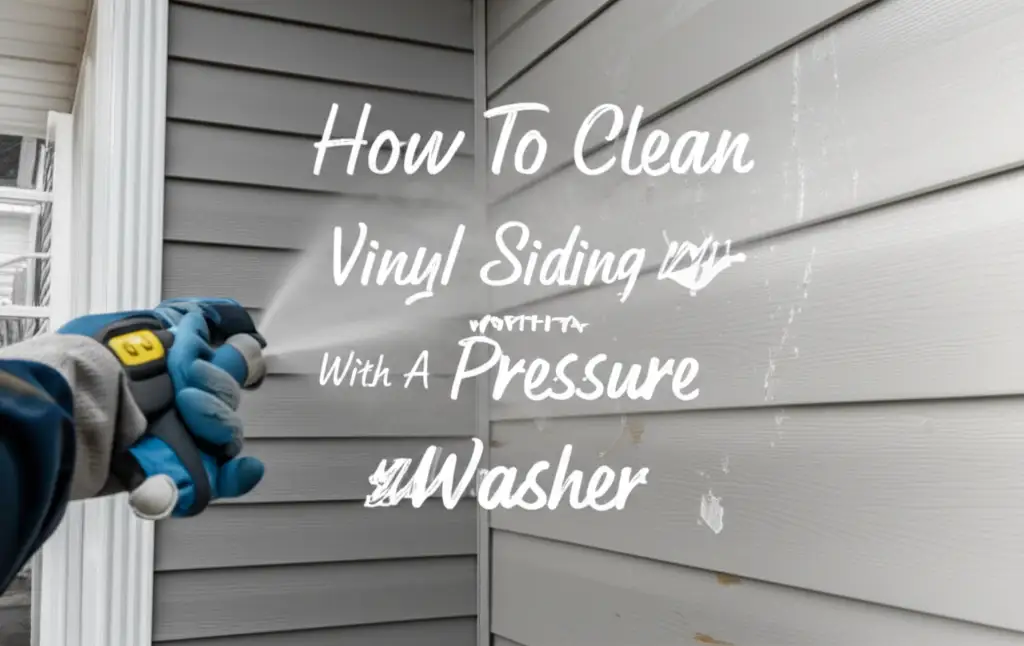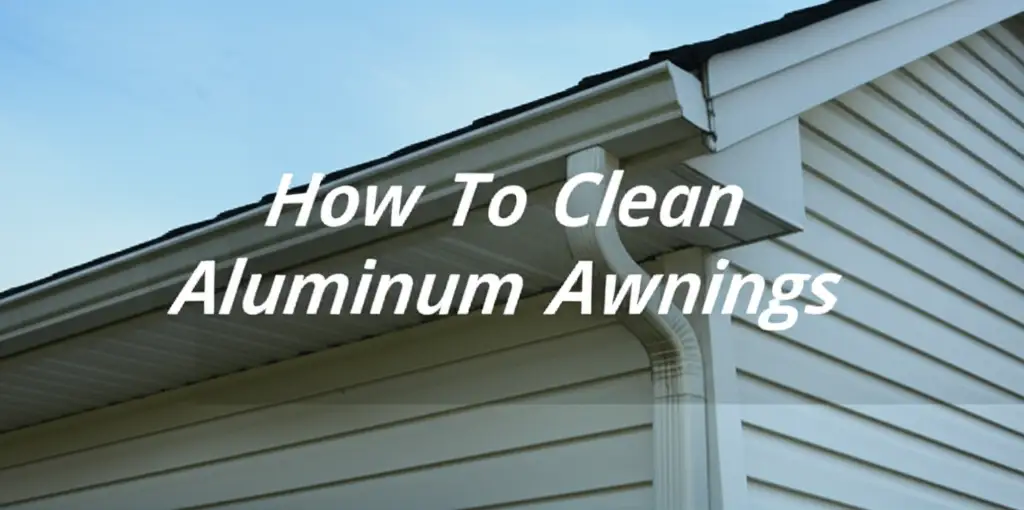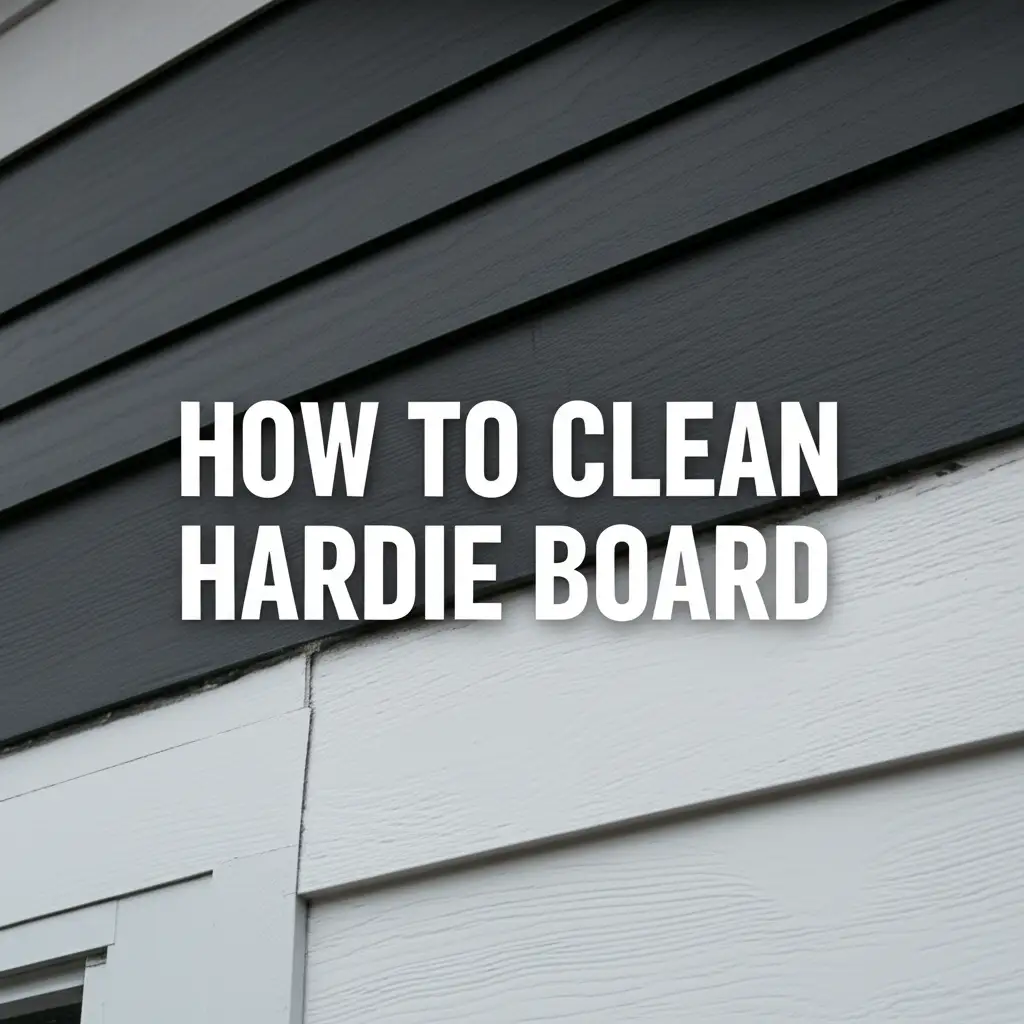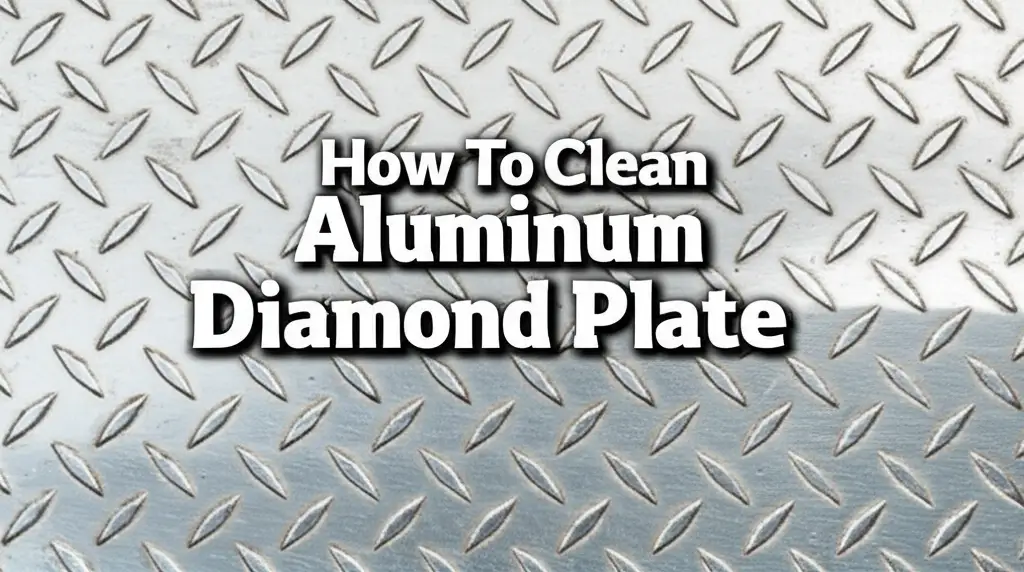· Home Maintenance · 14 min read
How To Clean Aluminum Siding
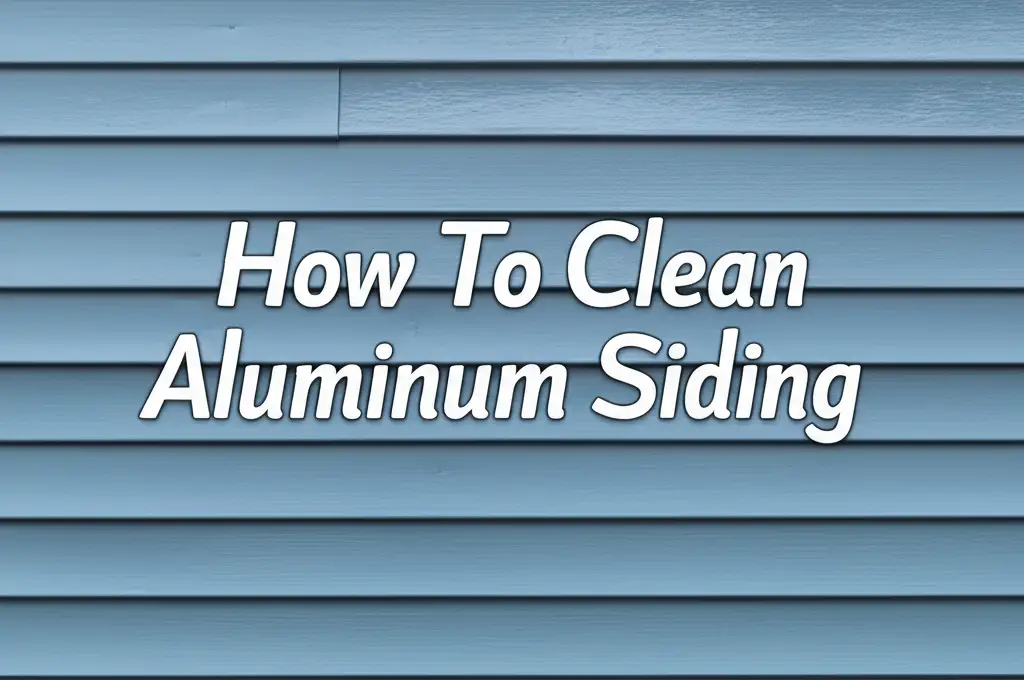
Restore Your Home’s Shine: How To Clean Aluminum Siding
Do you look at your home’s aluminum siding and wish it looked new again? Aluminum siding offers lasting appeal, but it gathers dirt, grime, and environmental buildup over time. Cleaning aluminum siding keeps your home looking great. It also protects your siding from damage. You do not need to hire professionals for this job. You can clean it yourself with basic tools and simple steps.
This guide will show you how to clean aluminum siding effectively. We cover everything from gathering supplies to tackling tough stains like mold and oxidation. We provide easy-to-follow instructions. You will learn the best methods for a safe and thorough cleaning. Get ready to give your home a fresh, clean look.
Takeaway:
- Prepare your area and gather the correct cleaning tools.
- Choose a gentle yet effective cleaning solution.
- Wash aluminum siding by hand or with a pressure washer carefully.
- Address specific issues like mold and oxidation.
- Maintain your siding with regular cleaning.
Answer: To clean aluminum siding, begin by rinsing it to remove loose dirt. Apply a gentle cleaning solution, such as a mix of dish soap and water or a specialized siding cleaner, using a soft brush or sponge. Work in small sections, scrubbing gently, then rinse thoroughly from top to bottom to prevent streaks.
Why Cleaning Aluminum Siding Matters for Your Home
Cleaning aluminum siding is not just about making your house look good. It is a vital part of home upkeep. Over time, your siding collects dirt, dust, pollen, and environmental pollutants. These elements dull its finish. They can also lead to more serious issues. Regular cleaning helps prevent these problems.
Aluminum siding is durable, but it needs care. Dirt and grime can trap moisture against the surface. This moisture promotes mold and mildew growth. Mold and mildew look unsightly. They can also slowly degrade your siding’s finish. Cleaning removes these harmful growths. It keeps your siding in good condition.
Oxidation is another common problem with aluminum siding. This appears as a chalky white residue. It happens when aluminum reacts with oxygen. Oxidation can make your siding look faded and old. Regular washing helps to remove this chalky layer. It restores the original color and shine. Protecting your siding extends its life. This saves you money in the long run. Keeping your siding clean improves your home’s curb appeal. A clean exterior increases your property’s value. It makes your home inviting.
Essential Tools and Supplies for Siding Cleaning
Before you start cleaning, gather all your supplies. Having everything ready makes the job easier and faster. You do not want to stop in the middle of cleaning to find a missing item. The right tools ensure a safe and effective clean. Using proper tools also protects your siding from damage.
First, you will need a garden hose with a spray nozzle. This is for rinsing the siding before and after washing. A soft-bristle brush is crucial. Choose one with a long handle. This lets you reach high areas without a ladder. A soft brush prevents scratches on the aluminum surface. You might also want a bucket or two. These hold your cleaning solution and clean water for rinsing tools.
For your hands, wear rubber gloves. These protect your skin from cleaning solutions. Safety goggles are also important. They shield your eyes from splashes. A sturdy ladder is essential for reaching upper levels of your house. Make sure the ladder is stable on level ground. You might also need a pressure washer if you plan to use one. Remember to choose the correct nozzle for siding. For more details on safe pressure washing, check out how to clean vinyl siding with a pressure washer, as many principles apply to aluminum as well.
List of Cleaning Supplies:
- Garden hose with a spray nozzle
- Soft-bristle brush (long handle preferred)
- Two large buckets
- Rubber gloves
- Safety goggles
- Sturdy ladder
- Mild cleaning solution (dish soap or commercial siding cleaner)
- Optional: Pressure washer (with appropriate nozzle)
- Optional: Sponge or soft cloths for detailed scrubbing
Gathering these items before you begin will streamline your entire cleaning process.
Preparing Your Home for a Safe Siding Wash
Preparing your home properly is a vital step before you start cleaning. This protects your plants, outdoor furniture, and the siding itself. Taking time for preparation prevents accidental damage. It also makes the cleaning process smoother and safer. Do not skip this important stage.
Start by moving any outdoor furniture, grills, or decorations away from the house. This prevents them from getting wet or splashed with cleaning solution. Cover nearby shrubs, bushes, and delicate plants. Use plastic sheeting or tarps for this purpose. This protects them from cleaning agents. Even mild solutions can harm sensitive plants. Water plants thoroughly before you start washing. This helps them absorb less of any cleaning solution runoff.
Close all windows and doors tightly. You do not want water or cleaning solution entering your home. Inspect window frames and seals. Ensure there are no gaps. Cover electrical outlets and fixtures near the siding. Use plastic bags and tape to seal them off. This prevents electrical hazards. Wet electrical components can cause damage or injury. Remove any items hanging on the siding. This includes light fixtures, house numbers, or decorative items. This allows for a uniform clean. Preparing your home thoroughly ensures a safe and effective cleaning session.
Choosing the Right Cleaning Solution for Aluminum Siding
Selecting the correct cleaning solution is key to a successful clean. Aluminum siding requires a gentle approach. Harsh chemicals can damage its finish. They can strip paint or cause discoloration. Always choose products designed for exterior home use. Mild options are often the best choice for general dirt and grime.
One simple and effective solution is a mix of dish soap and warm water. Use about one-quarter cup of liquid dish soap per gallon of water. This creates a gentle, sudsy solution that breaks down dirt and grease. It is safe for aluminum. It also poses minimal risk to plants if used correctly. For slightly tougher dirt, you can add a cup of white vinegar to the dish soap mixture. Vinegar helps cut through grime and acts as a mild disinfectant.
For specific problems like mold, mildew, or heavy oxidation, commercial siding cleaners are available. Look for cleaners labeled safe for aluminum or metal siding. Always read the product instructions carefully. Some cleaners require dilution. Others are ready to use. Test any new cleaner on a small, inconspicuous area first. This helps ensure it does not damage or discolor your siding. You can find specialized products designed to remove oxidation from aluminum. For stubborn oxidation, consider solutions specifically made for this, which can offer deeper cleaning benefits. Always rinse thoroughly after using any cleaning product. This removes all residue.
Step-by-Step Guide: How to Hand Wash Aluminum Siding
Hand washing aluminum siding offers the most control. It is perfect for lighter dirt or for houses with delicate landscaping. This method also minimizes water use compared to pressure washing. It gives you a good workout too. Follow these steps for a sparkling clean.
Step 1: Pre-Rinse the Siding. Use your garden hose to thoroughly spray down the entire siding surface. Start from the top and work your way down. This removes loose dirt, dust, and spiderwebs. It also wets the surface, preparing it for the cleaning solution. This step prevents streaks.
Step 2: Apply Cleaning Solution. Fill one bucket with your chosen cleaning solution. Fill the second bucket with clean rinse water. Dip your soft-bristle brush into the cleaning solution. Start applying the solution from the bottom of your house, working upwards in small sections. This helps prevent streaking. The cleaning solution stays wet longer this way. Apply enough solution to cover the area.
Step 3: Gentle Scrubbing. Use your soft-bristle brush to gently scrub the siding. Work in small sections, moving in a horizontal motion along the siding panels. Do not scrub too hard, especially on painted surfaces. Aluminum siding can scratch easily. Focus on areas with visible dirt or stains. Rinse your brush often in the clean water bucket to keep it clean.
Step 4: Rinse Thoroughly. Immediately after scrubbing a section, rinse it thoroughly with your garden hose. Start rinsing from the top of the section and work your way down. Make sure to remove all soap residue. Leftover soap can leave streaks or attract new dirt. Overlap your rinsed sections slightly to ensure no areas are missed. Continue this process until you have cleaned the entire house. Once done, give the whole house a final rinse from top to bottom.
Using a Pressure Washer Safely on Aluminum Siding
A pressure washer can save you time, but it needs careful handling with aluminum siding. High pressure can dent or strip paint from aluminum. If you choose to use one, always use a wide-angle nozzle and low pressure. This prevents damage while still providing an effective clean.
Pressure Washer Safety Tips:
- Choose the Right Nozzle: Use a 40-degree white tip or a 25-degree green tip. A wider spray pattern disperses the water’s force. Never use a zero-degree (red) nozzle. This concentrated stream can severely damage siding.
- Set Low Pressure: Set your pressure washer to a low PSI setting, typically between 1200 and 1500 PSI. Some experts suggest even lower, around 800 PSI, for very old or delicate siding. Test a small, hidden area first to check for any adverse effects.
- Maintain Distance: Hold the pressure washer wand at least 12-18 inches away from the siding surface. Moving closer increases the force of the water. Adjust your distance based on the pressure and how the siding reacts.
- Spray Downwards: Always spray water downwards, following the siding’s grain. This prevents water from getting behind the siding panels. Water trapped behind siding can lead to moisture problems and mold growth.
- Overlap Strokes: Use smooth, overlapping strokes. Do not linger in one spot. Lingering can cause damage or leave uneven cleaning lines. Work in sections from bottom to top when applying cleaner, then top to bottom when rinsing. This method helps avoid streaks.
Remember to still pre-rinse and apply your cleaning solution, even with a pressure washer. Many pressure washers have a soap dispenser attachment. After applying the solution and letting it sit (as per cleaner instructions), switch to clear water and rinse thoroughly. Pressure washing can be efficient for large areas, but caution is essential. It also cleans other metal surfaces effectively, like when you clean metal siding. Always prioritize safety and gentle techniques.
Tackling Stubborn Stains: Mold, Mildew, and Oxidation
Sometimes, regular washing is not enough for deep-set stains. Aluminum siding can develop mold, mildew, and oxidation. These require specific approaches. Addressing these problems makes a big difference in your home’s appearance. It also protects your siding.
Removing Mold and Mildew:
Mold and mildew appear as dark green, black, or grey patches. They thrive in damp, shaded areas. For effective removal, mix one part bleach with four parts water. Always wear protective gear, including gloves and safety goggles, when using bleach. Apply this solution to the affected areas using a soft brush or a low-pressure sprayer. Let it sit for 10-15 minutes. Do not let it dry on the siding. Scrub the areas gently. Then rinse thoroughly with clean water. Make sure to rinse surrounding plants well before and after. For more general advice on dealing with these common issues, you can learn how to clean mold off siding effectively.
Dealing with Oxidation:
Oxidation is the chalky white or grey film on older aluminum siding. It is a natural process as the aluminum ages. Removing it can restore much of the siding’s original color. A good solution for oxidation is a mixture of white vinegar and water. Use equal parts vinegar and water. Apply this mixture to the oxidized areas. Let it sit for 5-10 minutes. Then, scrub gently with a soft brush. For very heavy oxidation, you might need a specialized aluminum cleaner designed to remove oxidation from aluminum. These products often contain mild acids. Always follow the product’s instructions carefully. Test on a small area first. After scrubbing, rinse the siding thoroughly. You might need to repeat the process for severely oxidized areas. Persistence pays off when restoring your siding’s shine.
Post-Cleaning Care and Regular Maintenance Tips
After you finish cleaning your aluminum siding, a few steps can ensure its longevity and continued good looks. Proper post-cleaning care prevents new issues. Regular maintenance reduces the need for intense future cleanings. Think of it as protecting your investment.
First, take a final walk around your home. Check for any missed spots or streaks. If you find any, address them immediately. Rinse the entire house one last time from top to bottom. This ensures all cleaning solution residue is gone. Inspect your plants and landscaping. If any cleaning solution reached them, water them thoroughly to dilute any chemicals. Store your cleaning tools properly. Clean brushes and hoses. This prepares them for next time.
For ongoing maintenance, regular light cleaning is key. Aim to wash your aluminum siding once a year. This prevents heavy buildup of dirt, mold, and oxidation. If you live in an area with high pollen or humidity, you might need to clean more often. Keep an eye on shaded areas of your house. These spots are more prone to mold and mildew. Address small patches of growth as soon as you see them. This prevents them from spreading. Trim back any bushes or trees that touch your siding. This improves air circulation. It also reduces moisture buildup. These simple steps keep your aluminum siding looking its best for many years.
FAQ Section
How often should I clean aluminum siding?
You should clean aluminum siding at least once a year. In areas with high humidity, significant dust, or heavy pollen, cleaning twice a year might be necessary. Regular cleaning prevents dirt and mold from becoming deeply set.
Can I use bleach on aluminum siding?
Yes, you can use a diluted bleach solution (one part bleach to four parts water) to remove mold and mildew from aluminum siding. Always test it on an inconspicuous area first. Rinse thoroughly immediately after application to prevent damage.
What causes the chalky residue on aluminum siding?
The chalky residue is caused by oxidation. This happens when the aluminum reacts with oxygen over time. It is a natural process. Cleaning solutions with vinegar or specialized aluminum cleaners can help remove this chalky film.
Is pressure washing safe for aluminum siding?
Pressure washing can be safe if done correctly. Use a low-pressure setting (1200-1500 PSI) and a wide-angle nozzle (40-degree tip). Keep the wand at least 12-18 inches from the surface. Spray downwards to avoid forcing water behind panels.
What should I do if my aluminum siding is discolored after cleaning?
Discoloration often results from improper rinsing or using too harsh a cleaner. If mild discoloration occurs, try rinsing again thoroughly. For persistent issues, a professional cleaning might be needed. Sometimes, severe oxidation simply means the finish has degraded and might need repainting.
Can I paint aluminum siding after cleaning it?
Yes, you can paint aluminum siding after it has been thoroughly cleaned and dried. Ensure all oxidation, mold, and loose paint are removed. A clean surface provides the best adhesion for new paint. This can revitalize older siding.
Conclusion
Cleaning aluminum siding is a simple yet effective way to boost your home’s appearance. You now have the knowledge to tackle this task with confidence. From gathering your tools to choosing the right cleaning agents, each step helps maintain your home’s exterior. Remember, gentle methods and regular maintenance are key. These preserve your siding’s finish and prevent future problems.
Whether you choose to hand wash or use a pressure washer, safety and proper technique are paramount. Addressing stubborn issues like mold, mildew, and oxidation ensures a truly clean finish. By following these steps, you not only restore your home’s curb appeal but also extend the life of your aluminum siding. Make this a regular part of your home care routine. A clean home is a happy home. Ready to get started? Grab your supplies and give your home the fresh look it deserves today!
- aluminum siding
- siding cleaning
- exterior cleaning
- house washing
- oxidation removal

